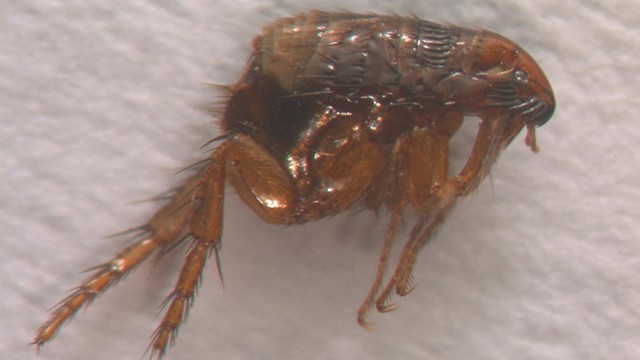Should You Be Worried About Your Pets Getting Ticks?
Published August 14, 2018 at 4:23 pm

The “dog days” of summer are here.
As autumn approaches, it’s a good time to be thinking about flea and tick protection.
If you haven’t already spoken to your veterinary team about your pet’s exposure and the right options to protect them from these six and eight-legged invaders, now is the time.
While fleas are most common in the warmer months, there can be an explosion of activity in the fall and early winter months.
Fleas have been building up outdoors all year and the chance of having fleas come inside on a pet, on a person or as a visitor through an open window, door or screen increases.
Pets that go outdoors, or live with other pets that go outdoors, are at higher risk.
Effective flea prevention involves treating all cats and dogs in the home, not just some.
Even in the deep snow, pets that have exposure to wildlife can still be infected. Taking preventive action now means not having fleas as unwanted Christmas guests.
Ticks can be seen all year round. While they won’t be feeding during the deep cold, they can be active in near freezing temperatures.
If your pet has exposure to ticks or tick habitats, they should be protected during the months where temperatures above 0 C occur.
Two ticks are commonly found on dogs in Canada, American dog ticks and Blacklegged (deer) ticks.
Both can bite and cause bite-related irritation.
They can also spread disease when they bite.
Deer ticks are associated with Lyme disease, an illness that can affect both dogs and people.
Tick strategies include avoiding tick habitats, reducing tick bites, using tick products and routinely checking pets for ticks after exposure.
In addition, Lyme vaccination is available; talk to your veterinary team to see if your dog should be vaccinated.
Talk to your veterinary team about your pet and the lifestyle factors that might put them at greater exposure.
Factors such as the number of pets in a home, exposure to the outdoors/wildlife, the areas where pets walk and play and the distribution of ticks and tick-borne diseases help determine what level, and what kind of flea/tick strategy is right for you and your pet.
Your veterinary team can help with recommendations for managing fleas, ticks and even mosquitoes.
Photo courtesy of the Canadian Animal Health Institute
insauga's Editorial Standards and Policies advertising





